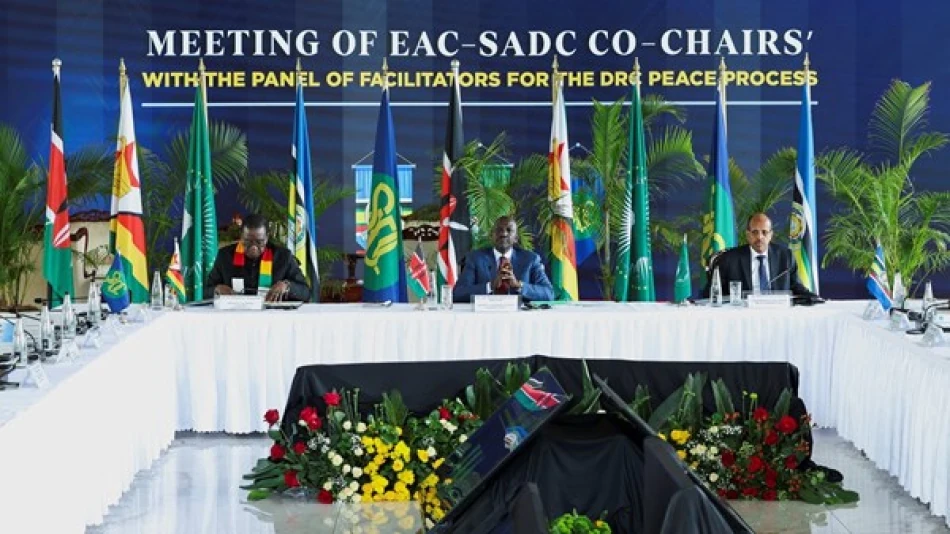
Democratic Republic of Congo and Rwanda Sign Economic Cooperation Pact to Boost Trade and Investment
Congo-Rwanda Economic Deal Signals US Push to Control Critical Mineral Supply Chains
The Democratic Republic of Congo and Rwanda have signed a landmark economic cooperation framework during their first talks since a June peace agreement, marking a strategic US-backed effort to secure access to Africa's vast reserves of lithium, cobalt, and other minerals essential for electric vehicles and modern technology. The agreement aims to bring transparency to mineral supply chains while potentially reshaping geopolitical influence in one of the world's most resource-rich regions.
Peace Through Economic Integration
The economic integration framework, initialed by both nations, represents a practical implementation of the peace deal brokered by the United States in June 2024. This agreement seeks to end decades of conflict in eastern Congo, a region that borders Rwanda and contains some of the world's most valuable mineral deposits.
The framework covers coordination across multiple sectors including energy, infrastructure, mining, national park management, tourism, and public health. Most significantly, it establishes mechanisms for greater transparency in supply chains for critical minerals like coltan and lithium, with implementation scheduled for the end of September 2024.
Strategic Timing and US Involvement
The talks, held Thursday and Friday in Washington, included representatives from both African nations alongside observers from the United States, Qatar, and the African Union. This marks the first high-level diplomatic engagement since the peace agreement, suggesting sustained momentum toward regional stability.
The US State Department characterized both the economic framework and the peace monitoring committee meeting as "important steps," noting that the neighboring African states are taking "serious measures to enhance security and economic cooperation."
The Critical Minerals Prize
The Democratic Republic of Congo sits atop what many consider the world's most valuable collection of critical minerals. As the globe's largest cobalt producer, the country also holds massive reserves of gold, coltan—a rare mineral ore essential for smartphones and laptops—and lithium, the key component in electric vehicle batteries.
This mineral wealth has attracted significant US attention amid growing competition with China for access to materials crucial for the green energy transition. Just two days before signing the June peace principles, Congo's government inked a deal with US-based Kobold Metals, a company specializing in critical mineral exploration.
Geopolitical Implications
The timing of these agreements reflects broader US strategy to counter Chinese influence in African mining sectors. China currently dominates global cobalt refining and has established significant mining operations across the DRC. By facilitating peace between Congo and Rwanda while promoting supply chain transparency, the US appears to be creating alternative pathways for critical mineral access.
Congo President Felix Tshisekedi's April meeting with US envoy Massad Boulos to discuss mineral wealth access agreements further underscores this strategic alignment. The approach mirrors similar US initiatives in other mineral-rich regions, though the scale and importance of Congo's resources make this partnership particularly significant.
Market and Investment Outlook
For investors and mining companies, the Congo-Rwanda agreement represents both opportunity and continued risk. While the peace framework and economic cooperation could stabilize operations in eastern Congo, the region's history of conflict and governance challenges means implementation will be closely watched.
The transparency measures for mineral supply chains could particularly benefit Western companies seeking to meet environmental, social, and governance (ESG) standards and comply with regulations like the US Dodd-Frank Act's conflict minerals provisions.
Regional Stability Test
Eastern DRC has experienced renewed violence throughout 2024, despite multiple ceasefire declarations. The June 19 peace principles signed between Congo and the M23 rebel group represented the latest attempt to establish lasting peace after months of failed ceasefires.
Success of the economic integration framework will largely depend on sustained peace in the mineral-rich border regions. Historical precedent suggests cautious optimism is warranted—previous peace efforts have struggled against the complex interplay of ethnic tensions, resource competition, and regional power dynamics that have fueled decades of conflict.
The involvement of multiple international observers and the concrete economic incentives embedded in the framework may provide stronger foundations for lasting stability than previous diplomatic efforts. However, the true test will come in the implementation phase, where economic cooperation must translate into tangible benefits for local populations while maintaining the delicate political balance between former adversaries.
 Layla Al Mansoori
Layla Al Mansoori







